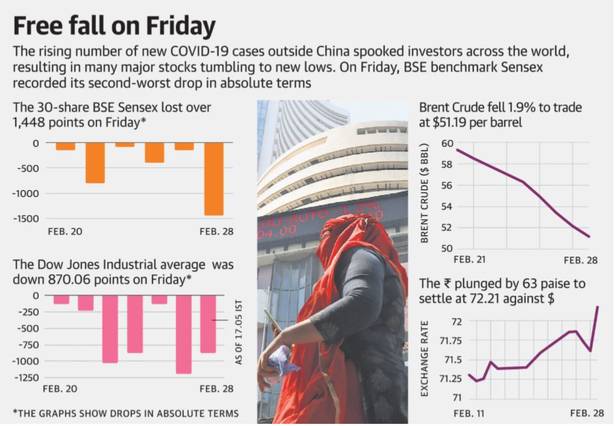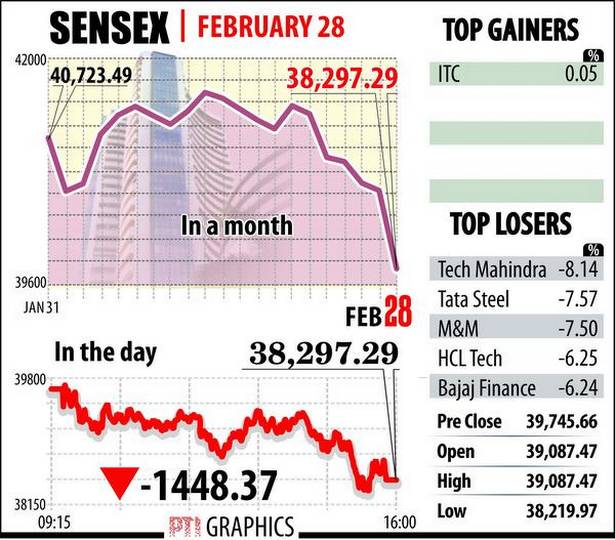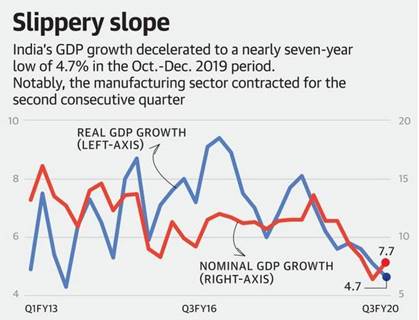DAILY NEWS ANALYSIS 29 FEBRUARY
SOCIETY
Decision soon on 5% reservation for Muslims in Maharashtra educational institutions
Government decision:
- The State government will take a decision on bringing 5% reservation for Muslims in educational institutions soon.
Opposition arguments:
- Andhra Pradesh gave reservation to Muslims but it was rejected by Supreme Court. Then how will you do it?
- When reservation was given to Marathas, a commission was appointed to prove backwardness.
- The State Backward Class Commission cannot recommend reservation based on religion. In order to give a legally valid reservation, what steps will be taken?
- Government is doing this for Muslim votes but this reservation will not stand in court.
Legality behind the reservation based on religion:
- The problem in recognising the SEBCs ( Socio and Economic backward community) within the Muslim minority arises from the false assumptions within the community that it will lead to polarisation on caste lines that according to them does not exist within their community.
- Mostly recognise that majority of Indian Muslims are converts and have inherited, not only the profession but also the social and educational backwardness.
Challenges:
- Implementation of reservations on the basis of religion may result in social unrest in the country and "lead to creation of another Pakistan".
- Communal reservation will divide people on the communal basis. It will give demand to another partition of the country.
- It will bring disunity among the people.
Farmers’ not to be hurt by govt. move to cut crop cover premium: Bhutani
Comment of Pradhan Mantri Fasal Bima Yojana (PMFBY) CEO Ashish Kumar Bhutani.:
- The Centre’s move to reduce its subsidy share in the case of high premium crops under its flagship agricultural insurance scheme will not increase the cost to farmers.
- It should spur States to take steps to ensure that premiums are reduced.
- Farmers share of premium under PMFBY is not going to change under any circumstances.
Changes in the Scheme:
- The scheme has been made optional for crop loanee, earlier, it was mandatory for farmers who took crop loans.
- The Centre had capped its subsidy for premium rates up to 30% for unirrigated crops and 25% for irrigated areas and crops.
Impact:
- So long as the premium for a crop in a particular district is below the cut-off figure of 30%, the Centre will equally split the subsidy burden with the State.
- If the premium is above 30%, the State will have to pay the entire additional amount.
About Fasal Bima Yojana:
- It is the centre sponsored crop insurance scheme that integrates multiple stakeholders on a single platform.
- Objectives
- To provide insurance coverage and financial support to the farmers in the event of failure of any of the notified crop as a result of natural calamities, pests & diseases.
- To stabilize the income of farmers to ensure their continuance in farming.
- To encourage farmers to adopt innovative and modern agricultural practices.
- To ensure flow of credit to the agriculture sector.
- Key features:
- There will be a uniform premium of only 2% to be paid by farmers for all Kharif crops and 1.5% for all Rabi crops. In case of annual commercial and horticultural crops, the premium to be paid by farmers will be only 5%. Balance premium will be paid by the Government to provide full-insured amount to the farmers against crop loss on account of natural calamities.
- Smart phones will be used to capture and upload data of crop cutting to reduce the delays in claim payment to farmers. Remote sensing will be used to reduce the number of crop cutting experiments.
- It is a replacement scheme of National Agricultural Insurance Scheme as well as the Modified NAIS.
- Eligibility: All farmers growing notified crops in a notified area during the season who have insurable interest in the crop are eligible.
- Voluntary coverage: The enrolment under the scheme shall be voluntary for following categories of farmers:
- Farmers in the notified area who possess a Crop Loan account/KCC account (called as Loanee Farmers) to whom credit limit is sanctioned/renewed for the notified crop during the crop season and other farmers whom the Government may decide to include from time to time.
Voluntary coverage: Voluntary coverage may be obtained by all farmers not covered above, including Crop KCC/Crop Loan Account holders whose credit limit is not renewed.
Comparison with previous scheme
|
Sl.No |
Feature |
NAIS [1999] |
MNAIS [2010] |
PM Crop Insurance Scheme |
|
1 |
Premium rate |
Low |
High |
Lower than even NAIS (Govt. to contribute 5 times that of farmer) |
|
2 |
One Season – One Premium |
Yes |
No |
Yes |
|
3 |
Insurance Amount cover |
Full |
Capped |
Full |
|
4 |
On Account Payment |
No |
Yes |
Yes |
|
5 |
Localized Risk coverage |
No |
Hail storm, Land slide |
Hail storm, Land slide, Inundation |
|
6 |
Post Harvest Losses coverage |
No |
Coastal areas - for cyclonic rain |
All India – for cyclonic + unseasonal rain |
|
7 |
Prevented Sowing coverage |
No |
Yes |
Yes |
|
8 |
Use of Technology (for quicker settlement of claims) |
No |
Intended |
Mandatory |
|
9 |
Awareness |
No |
No |
Yes (target to double coverage to 50 |
Delhi water doesn’t conform to ISO standards
BIS comments:
- None of the drinking water samples randomly collected from across Delhi conforms to the ISO standards of purity in one or more requirements.
- The sample taken from minister’s, Janpath residence failed on the parameters of odour and aluminium and coliform contamination.
- These tests covered organoleptic and physical test, chemical test, toxic substance, bacteriological, virological and biological test.
Supreme Court order:
- The court ordered the pollution control board and the BIS to conduct a random check of water quality in Delhi and submit a report in a month.
- Asked the BIS to suggest measures to improve water purity
- Asked it for reports on the samples taken from the other cities.
About BIS:
- The Bureau of Indian Standards (BIS) is the national Standards Body of India working under the aegis of Ministry of Consumer Affairs, Food & Public Distribution, Government of India.
- The Bureau of Indian Standards Act, 1986, establishes it.
- The Minister in charge of the Ministry or Department having administrative control of the BIS is the ex-officio President of the BIS.
POLITY
Caste-based census: all-party delegation from Maharashtra to meet PM, Shah
Government rules on census:
- Collection of data of OBCs, SEBCs, other castes etc. will adversely affect integrity of census exercise.
- Hence the enumeration of OBCs, SEBCs, other castes has not been taken up in 2021 Census which has been notified in Gazette of India on March 28, 2019.
- Unlike Scheduled Caste and Scheduled Tribes, there is no such constitutional mandate to provide census numbers of OBCs.
ECOONMY
COVID-19 | Coronavirus infects global markets, investors exit equities


Slowdown has ‘bottomed out’, says Centre as growth slows to 4.7% in Q3
India’s third-quarter growth decelerated to 4.7%, the slowest pace in about seven years, as a slump in manufacturing weighed on overall economic momentum.
GDP data:
- National Statistical Office released data showing that Gross Domestic Product expanded by 4.7% in the quarter ended in December 2019, compared with 5.6% in the year-earlier period.
- The NSO also released the second advance estimates, projecting a GDP growth of 5% for 2019-20, in comparison with 6.1% in 2018-19.
- The NSO revised upward its GDP growth estimates for the first two quarters of the current fiscal year:
- Growth in the first quarter of 2019-20 was pegged at 5.6%, higher than its earlier estimate of 5%.
- For the second quarter too, it increased the estimate to 5.1%, from 4.5%.
Future prospects:
- The turnaround in growth in the eight core sector industries index in December 2019 and January 2020 also augurs well for the manufacturing sector.
- Sustained improvement in agriculture and services continue to drive growth.
- Government’s increased spending, especially on infrastructure, had helped spur a modest economic recovery.

About GDP:
- It is the sum of private consumption, gross investment in the economy, government investment, government spending and net foreign trade (difference between exports and imports).
- The following equation is used to calculate the GDP: GDP = C + I + G + (X – M) or GDP = private consumption + gross investment + government investment + government spending + (exports – imports).
About NSO:
- The National Statistical Office (NSO) headed by a Director General is responsible for conduct of large scale sample surveys in diverse fields on All India basis.
- Primarily data are collected through nation-wide household surveys on various socio-economic subjects, Annual Survey of Industries (ASI), etc.
- Besides these surveys, NSO collects data on rural and urban prices and plays a significant role in the improvement of crop statistics through supervision of the area enumeration and crop estimation surveys of the State agencies.
- It is under the Ministry of Statistics.



1.png)
